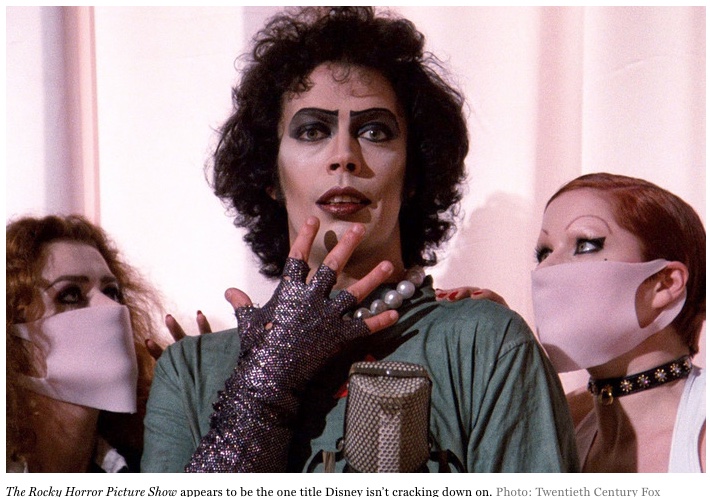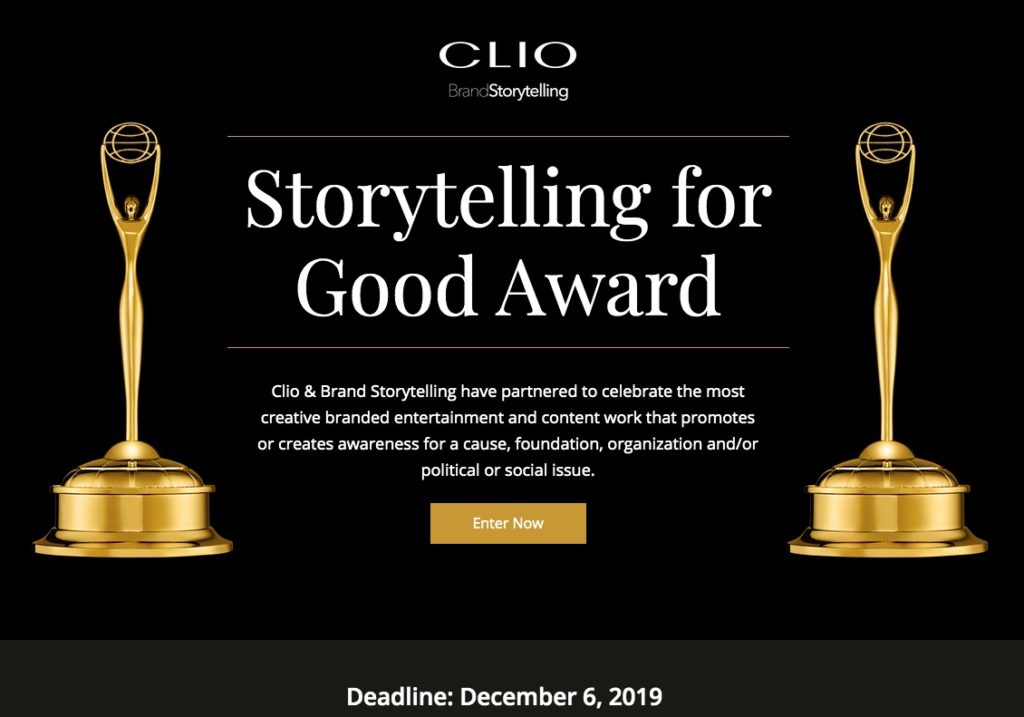
More from the best of times, worst of times files. Three articles hit this week that obliquely touch on what I think is a big crisis facing the indie film sector – in the middle of a golden age for content – and the need for us to build more mechanisms to support indie and arthouse narrative films.
First, Variety reports on the rising costs of scripted TV series as the streaming wars heat up. What does that have to do with arthouse cinema, you ask? Well, the article points out that not only are all of the streamers paying top dollar and attention to scripted originals – which means they are acquiring less of everything else – but that this practice also means that everyone in the industry has more options and their rates go up. Whether you’re trying to hire a director, cast, or a stunt person, or a Grip, or a publicist – they all have plenty of work and don’t need to scrimp by working on smaller indie films. Point being – a crowded marketplace can hurt smaller films in many ways.
Second up, Matt Zoller Seitz penned a nice piece in Vulture yesterday on how Disney is extending its habit of locking things away in the “vault” instead of allowing repertory screenings, and is now blocking many theaters from playing older Fox titles. It’s possibly a ploy to get you to subscribe to Disney+, but also a threat to the bottom line of many indie theaters. While this is a little complicated, it has a big impact on what gets shown and the possible livelihood of arthouse and indie film. As Zoller Seitz writes – and it’s worth quoting this passage in full:
There might be a tendency to see all this as a niche issue, one that only affects nostalgists and people who are still enamored with the theatrical experience. But Escobar (Chris, of Atlanta’s Plaza Theater and Atlanta Film Society) and other theater owners interviewed for this piece point out that the estimated 600 independent first-run theaters left in the United States are the only reliable incubators for independent filmmakers who are unlikely to have their work screened in multiplexes dominated by Disney and other major distributors. Many of them are international filmmakers, documentary filmmakers, and filmmakers of color who are going to lose access to these venues unless they’re subsidized by other events such as repertory screenings of old movies that can be relied on to draw crowds. “These kinds of theaters are the only places where women filmmakers and other members of underrepresented groups can go and see themselves, the last frontier space,” Escobar says. “The more the means of making, distributing, and exhibiting films are controlled by a handful of companies, the fewer entry points those voices are going to have.”
Yikes. And then, Bilge Ebiri, also writing in Vulture, about the controversy over Scorsese et al dissing on Marvel, points out this little gem:
There’s one thing Scorsese said that really sticks out: Speaking of Marvel movies, he said they were “creating another kind of audience that thinks cinema is that.”(emphasis mine) All great films create their own audience, in a sense; you can’t really broaden the art form’s range of expression without teaching your audience new ways to experience and think and feel about what’s onscreen and, by extension, the universe beyond the frame. Citizen Kane does this; Rashomon does this; 2001 does this; Jeanne Dielman does this; Do the Right Thing does this. (And it’s not just the capital-M Masterpieces that do it, either. Anna Rose Holmer’s The Fits does this; Chloé Zhao’s The Rider does this; Robert Greene’s Actress does this. I could go on, but we’d be here all day.)... (and he continues later):
Action blockbusters have always been successful, and the industry’s more independent-minded artists have always struggled to get around the financial imperatives of what is, after all, a business. But the last 15 or so years have seen rapid monopolization across many industries, and these types of releases have become dominant in what is increasingly looking like a zero-sum game. While lots of other films get made — more, in fact, than have ever been produced before — all the oxygen in the room gets sucked out by the big ones, leaving the smaller ones to choke.
Indeed. And if we lose those films, we’re gonna lose all sense of what cinema is and can be. As the blockbusters and “original content” fill every screen, we’re losing precious space for other voices.

As I read these reports, I was also coming down from the high that is The Good Pitch, earlier this week. Six documentary projects pitched to a room of 400+ supporters who might fund, help distribute, or help them have impact with their films. It’s a great endeavor, and it’s just one small part of what has become an entire ecosystem supporting documentary films for social impact. Sure, theaters and screens are getting overbooked by blockbusters and new shows, but these films will be seen and will have an impact – and the filmmakers can scrape together a living – because the documentary field has built this ecosystem of support over time. It was hard work, and it didn’t always make sense, but here we are after some decade or more of tinkering, and we kinda have a system that works.
But as great as it was to realize this, it also reminded me of an even greater absence – of any similar ecosystem in support of arthouse and indie film. Sure, we have Sundance and all the film festivals of the Film Festival alliance, and whatnot, but there’s nowhere near the same level of support, or thinking about new models for support, going on for narrative films that aren’t blockbusters. All the rest of these films have never been easy to make – but now they are being made in a market where it costs more to attach talent and crew, and where the biggest platforms and distributors are focused on ever bigger projects and at keeping other films off screens, and as audiences begin to think there’s no issue because nothing else is showing up anyway, and hey, there’s Thor coming at me.
I call this a crisis, and it won’t just be for the makers and lovers of niche cinema. Our culture needs independent voices – telling different, more nuanced stories – and it will be poorer in their absence. I think this is a topic we should be talking about at conferences, festivals and inside every nonprofit in the space. Because we need some novel solutions, and soon.
What I’m Reading: Film
How High Frame Rate technology ruined Gemini Man – Bilge Ebiri, one of the smartest film writers out there, gives a good break-down on Vulture, of why Gemini Man doesn’t work at the high frame rate projection that Ang Lee prefers.
Netflix tracks shows by measuring ‘starters,’ ‘watchers,’ and ‘completers’ – the Verge breaks down new data from Netflix on how they measure a view. More insight than we’ve had for awhile.
Why do we re-watch films over and over? The BBC’s Clare Thorp breaks down the many reasons – nostalgia, familiarity, too much to choose from and more. Add this to the issues facing new arthouse films above as well.
Which Streaming Sevice(s) should you pay for? Time Magazine runs one of the first break-downs, of what will soon be an overflow of articles trying to help us wade through the services, so we can wade through the content…
Disney+ announced its nonfiction line-up – It’s an odd-mix, to be honest – some older tiles, some relaunches, but also some interesting directors like Jeff Malmberg (of Marwencol). I think they’ll get to 80M+ subscribers soon on library titles alone, but I am scratching my head so far on this even being an announcement.
A lot of great film criticism is now online to stream – I’ve long been a fan of the practice of using video as a form of film criticism and commentary – in fact, I think the whole Op-Doc trend should be focused on this format instead of what is has become – and now The Guardian has a great run-down of some of the better examples, and the new BBC iPlayer series Inside Cinema. Check it out.
The D-Word and Peter Hamilton discuss all things Netflix:Netflix runs the wold, and is also a big black hole for most of the field – what are they funding, what are the terms, how can you break in, what’s working, etc. Well the D-Word – an online member community for doc filmmakers that you can join for free (and should, it’s great) is running a week long forum on this subject. From their announcement: we’re so fortunate to have Peter Hamilton, a veteran documentary business consultant who has written the ultimate guide to Netflix, leading a special 5-day topic starting today on The D-Word: Dealing with Netflix: What you need to know NOW! Go there, read and learn.

Film I recommend: Light from Light, starring Marin Ireland and Jim Gaffigan opens NYC Nov 1st from Grasshopper Films at the Quad (and then elsewhere).
Gifted with sometimes-prophetic dreams and a lifelong interest in the paranormal, Sheila (Marin Ireland) is asked to investigate a potential haunting at a Tennessee farmhouse. It’s there she meets Richard (Jim Gaffigan), a recent widower who believes his wife may still be with him. The investigation that ensues — which eventually pulls in Shelia’s son, Owen and his classmate Lucy — forces them to confront the mysteries of their own lives.
I’m old friends w the director, Paul Harrill and think all of his films are great. I highly recommend putting this on your watchlist, or buying tickets to see it w some of the cast (and Paul) for the Q&A in NYC.
Branded Content
Three Things to know about Brands and Impact: BrandStorytelling interviewed Shabnam Mogharabi of Soul Pancake to give three great take-aways from their joint study on brands and impact entertainment. It’s a six minute video – watch it at your desk, on the clock, as it will make your work stronger.
A look at Roku’s Branded Content pitch: From DigiDay, a look at Roku’s push to have advertisers buy ad space on its home screen – to the right of its list of streaming apps, to promote branded content. No one is sure if anyone will click, but it’s a big piece of real estate to promote your shows. Or just another intrusive ad – we’ll see where this one lands in the public debate soon.
Podcasts (and Video) may be hot, but don’t forget text: Adweek has a good article on why text is still important to your brand content strategy. As they say: “A fair word of warning for brands here is to ensure that this experience is in some way additive to your audience’s lives, which means not simply copying and pasting headlines from owned content efforts and calling it a day, but rather embracing a curator mindset.”

A new award has been made for branded content that is “storytelling for good” thanks to BrandStorytelling and the Clio’s. Make sure to enter your films soon – I look forward to seeing the winners in January in Park City.
How Pressboard is changing the way advertisers get content published – A dive-in from DailyHive, looking at how Pressboard works, why it was created and more from the founder. Pressboard is more of a marketplace for content marketing, but it’s a good solution for certain branded content. Check it out.
Social tagging: branded content > crisis > Disney > Fox > impact > Netflix > original content > scripted > vault